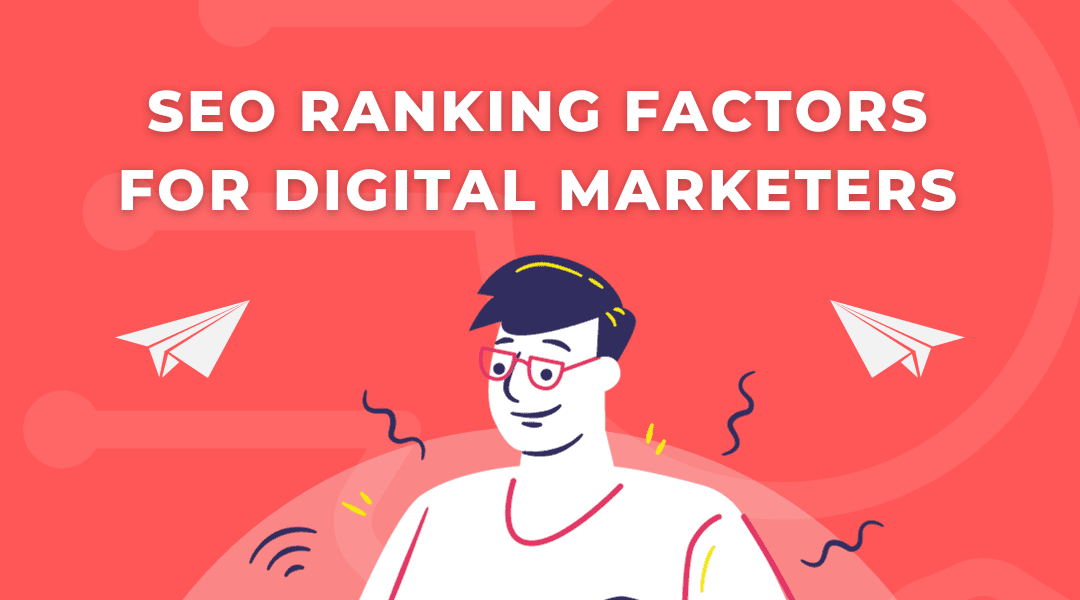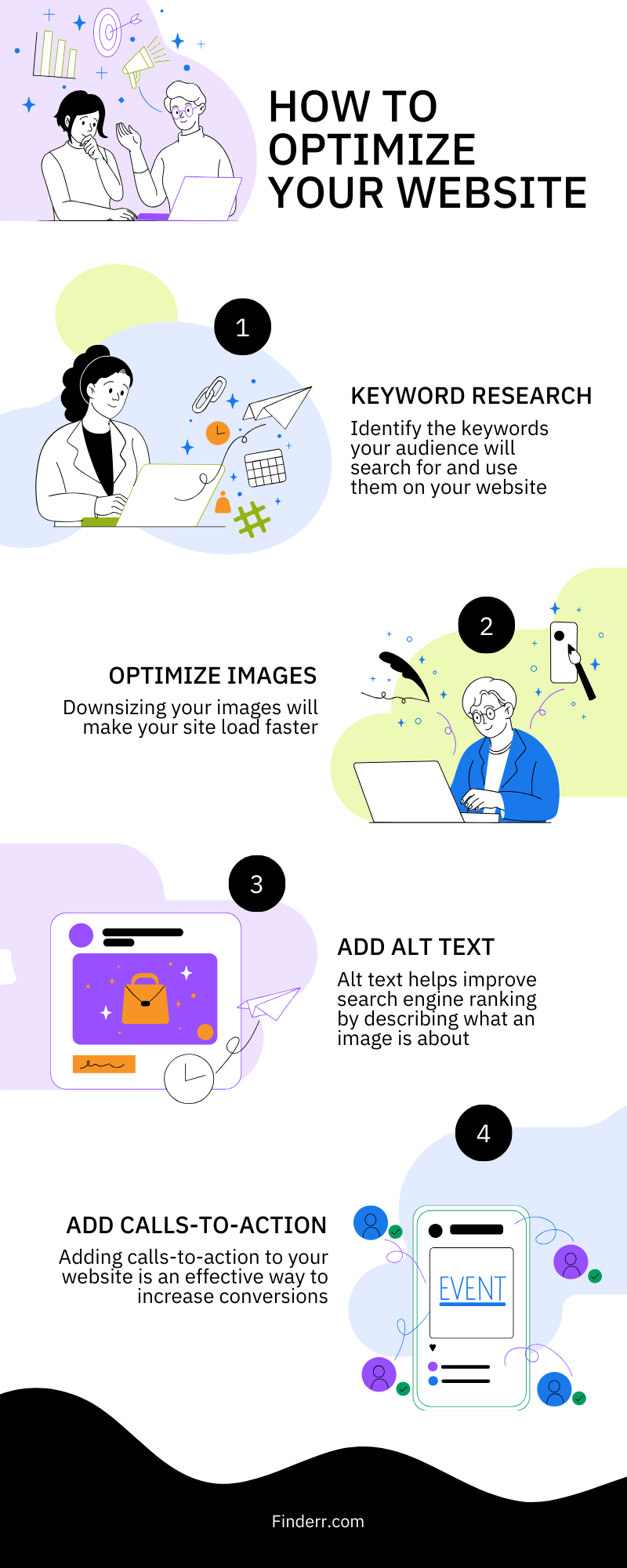
Search algorithms evolve constantly, changing the landscape for digital marketers and SEO professionals. To stay ahead in this dynamic arena, understanding the core SEO ranking factors is crucial. Consistent application of proven SEO practices leads to climbing search results, enhancing visibility and driving organic traffic.
On-Page SEO Essentials
On-Page SEO is the cornerstone of any robust SEO strategy, encompassing elements such as meta tags, headings, URL structure, and content quality. Thoroughly optimizing these components ensures your site becomes more comprehensible not just to users, but also to search engines. In essence, each webpage should be meticulously crafted with keyword integration and user-centric content, all structured within an accessible and intuitive layout.
Navigation and internal linking are fundamental on-page factors that contribute significantly to site ranking prowess. A logical, well-mapped site architecture facilitates smoother user journeys and allows search engine crawlers to index pages more effectively, bolstering a site’s relevance and authority in SERPs—key components in the algorithmic calculus of search engine optimization.
Crafting Compelling Title Tags
Title tags, albeit small in character count, wield immense power in the realm of SEO. They are the frontline ambassadors of your content, determining the first impression and click-through rate from search engine results pages (SERPs). A well-crafted title is essential as it encapsulates the essence of the page’s content and beckons visitors to enter.
For that headline to resonate with both users and search engines, it must blend relevancy with creativity. Treat it like a digital handshake—a firm and friendly introduction. Keep it concise, yet descriptive enough to signal the content’s subject matter, employing targeted keywords near the beginning for optimal search visibility.
Every word in a title tag can impact rankings.
When creating title tags, remember the dual audience: the algorithm and the human reader. They should not only include keywords for SEO but also evoke curiosity or offer value to prompt clicks. These few dozen characters are your chance at a compelling narrative distilled into a brief phrase—and should not be underestimated in their role in your SEO success.
Meta Descriptions That Click
Crafting meta descriptions is both an art and a science, requiring a marketer to distill allure and information within a 160-character limit.
- Lead with Active Verbs: Start with action-oriented language to encourage user engagement.
- Incorporate Target Keywords: Seamlessly integrate your primary keywords to enhance relevance for search engines.
- Provide Clear Value Proposition: Clearly state what users will gain by clicking, making the benefit of visiting the page obvious.
- Spark Curiosity: Craft your message to intrigue the searcher, prompting them to seek more information.
- Include a Call-to-Action: A subtle invitation such as “Learn more” or “Discover” can increase click-through rates.
- Match Content: Ensure that your description accurately reflects the content of the page to improve user experience and reduce bounce rates.
Each meta description is a tightrope walk balancing keyword inclusion and user enticement within narrow confines.
Subtle, compelling, and precise—effective meta descriptions bridge the chasm between search results and website visits, converting searchers into readers.
Strategic Keyword Placement
Strategic keyword placement is pivotal for ensuring prominent visibility in search engine results pages (SERPs). Careful consideration of how and where keywords are used can significantly affect a page’s ability to rank for those targeted phrases.
For maximum impact, important keywords should feature prominently in the title tag, heading tags, and within the first 100 words of your content. This placement signals to search engines the relevance of these terms to your content. Keywords and related semantically-rich phrases should also be naturally integrated throughout the text, to enhance thematic consistency without veering into the territory of keyword stuffing.
Moreover, using keywords in the URL slug contributes to a coherent signal of content relevance and can positively influence click-through rates from the SERPs. When coupled with strategic placement inside meta descriptions, these inclusions can make the difference in a user’s decision to click on your link over another, further supporting the SEO efficacy of your keyword deployment.
Lastly, incorporating keywords into alt text for images and captions not only aids in accessibility but also provides additional contexts for search engine crawlers. By ensuring that keywords align with user intent and are woven into these areas thoughtfully, digital marketers can strengthen the page’s thematic relevance and boost its likelihood of ranking higher in SERPs for those chosen terms. Proper keyword placement is thus a delicate art, requiring finesse to maximize its potential without compromising the user experience.

Technical SEO Decoded
Embarking on the quest for a top spot in search engine rankings can seem daunting, but a firm understanding of Technical SEO lays the foundation for success. At its core, Technical SEO involves optimizing the infrastructure of a website, making it easier for search engines to crawl and index content. This encompasses a myriad of components, from improving page speed with minified code and optimized images—vital for both user experience and search engine algorithms—to implementing structured data which enhances understanding and visibility of content types. Ensuring mobile-friendliness is no longer optional; it’s a prerequisite, as mobile-first indexing is the standard approach for Google. Moreover, securing your site with HTTPS not only protects user data but is also a ranking signal. By addressing these technical elements, digital marketers can secure a robust framework poised to support content and user engagement strategies.
Page Speed Optimization
Page speed isn’t just about rapid content delivery; it’s instrumental in user retention and search rankings alike. The correlation between page load times and bounce rates is stark—with slow-loading pages facing the brunt of user impatience and attrition.
Since 2010, when Google officially announced page speed as a ranking factor, the scrutiny on website performance has sharply increased. Digital marketers well-versed in optimization strategies understand that even milliseconds can make a crucial difference, affecting visibility, traffic, and ultimately, conversion rates.
Now, it’s not enough to only have appealing content; a site must be swift. Implementing techniques such as browser caching, compressing images, and minimizing JavaScript and CSS, are fundamental in cutting down load times. Google’s Core Web Vitals have emerged as a quantifiable set of metrics, further embedding page speed into the fabric of SEO best practices.
The advent of mobile usage escalation intensifies the need for speed optimization. Given that a significant portion of web traffic stems from mobile devices, optimizing for speed on smaller screens with potentially slower internet connections becomes imperative for market competitiveness.
Incorporating AMP (Accelerated Mobile Pages) may provide that vital edge, delivering an ultra-fast experience tailored for mobile users—once a novelty, now a necessity in an increasingly mobile-dominated online sphere.
Mobile-Friendly Websites
Mobile-friendly design is now an essential, not just a luxury. For digital marketers and SEO professionals, ensuring a seamless mobile experience is paramount for successful online strategies. As mobile search overtakes desktop, the user’s encounter with a website on their handset can dramatically influence rankings.
Google’s mobile-first indexing underlines the importance of mobile-friendly websites. Those not optimized for mobile are at a significant disadvantage in search results.
Responsive web design ensures uniformity across different device sizes. This approach caters to users by dynamically adjusting layout and content (text, images, and other media) for optimal viewing and interaction.
Building for mobile also demands attention to touch-friendly interfaces. Buttons and navigation must be designed with a tactile experience in mind, accommodating fingers of all sizes rather than mouse clicks.
Remember, mobile-friendliness goes beyond aesthetics—it affects technical SEO. Structured data and meta tags need to be optimized to communicate efficiently with search engines, boosting visibility for mobile searches that are rapidly growing in volume.
Lastly, don’t forget that Google factors in mobile usability when determining page rank. Pages that offer a smooth, intuitive mobile experience are more likely to climb the SERP ladder, outperforming those that neglect mobile users.
Structured Data Implementation
Structured data is a systematic way to annotate content, enabling search engines to understand context and meaning, significantly improving the chances of enhanced display in search results, like rich snippets. It employs a standardized format—often JSON-LD (JavaScript Object Notation for Linked Data).
Implementing structured data correctly is pivotal for successful semantic SEO.
Rich results boost user engagement and CTR (click-through rates), as they provide more information and even visual appeal.
Incorporating the right schema ontology empowers pages to communicate precisely what they’re about, increasing the accuracy of search engine indexing and, potentially, the relevance of traffic they attract.
To excel, digital marketers must ensure their structured data is error-free and up-to-date, which will help in maintaining eligibility for rich results and, consequently, higher SERP positions.
Structured data is a dynamic area, as search engines continually update the features and presentation of rich results. Marketers must stay informed of these changes to leverage the full potential of structured data.
Remember, Google often tests new rich results formats, meaning proactive structured data implementation can provide early-bird advantages in recognition and click-through rates.
✅ Sign up with Finderr to explore how AI can transform your SEO approach
Off-Page SEO Tactics
Building a robust backlink portfolio is essential for off-page SEO success. High-quality links from reputable sites signal trust and authority to search engines, helping to improve rankings.
In the realm of off-page SEO, social signals and brand mentions can indirectly impact rankings. Although not direct ranking factors, these elements reflect brand authority and user engagement, which search engines value highly.
Moreover, guest blogging and influencer collaboration extend reach and bolster backlink profiles, driving both referral traffic and enhancing domain authority.
Building Quality Backlinks
Backlinks are invaluable SEO currency.
Quality backlinks act as endorsements, signifying that a site is a credible and authoritative source. Digital marketers focus on earning links from websites with high domain authority, as these are more influential in Google’s eyes. The process of acquiring such links requires a strategic approach, where relevance and organic link development are paramount.
A single high-quality link can outweigh dozens of poor-quality ones.
In the pursuit of backlinks, quantity should never eclipse quality. A single link from a top-tier website might carry more weight than numerous links from lesser-known sites. This consideration is vital for devising a backlink strategy that prioritizes substance over sheer numbers, thereby fortifying the SEO foundation.
Link building strategies should prioritize relevance and authority.
Developing a robust link-building campaign is crucial—aim for links with contextual relevance to your content. Not only do these links provide more SEO value, but they also ensure that the traffic generated is more likely to engage with your site, further boosting your SEO efforts.
Authentic links contribute significantly to long-term SEO success.
The right approach to backlinks is to seek out genuine connections with authoritative platforms, organically integrating your website into the broader web. This effort will lay a solid groundwork for sustainable SEO growth that will echo through updates and trends, well beyond the confines of 2023’s search landscape. Fostering relationships that yield high-quality links is a cornerstone of a formidable online presence.
Managing Online Reputation
Reputation management is fundamentally intertwined with SEO—monitor reviews, social mentions, and all public feedback. Actively managing these elements can mitigate potential harm and leverage positive sentiments.
Addressing negative sentiment swiftly and constructively is imperative for maintaining credibility.
An immaculate reputation can elevate perceived authority, influencing both user behavior and search engine rankings. Maintaining a positive online presence involves constant monitoring and engagement, addressing concerns transparently and fostering a community that reflects brand values.
Crafting a positive narrative through customer testimonials, high-quality content, and strategic public relations efforts paves the way for better search rankings. A good reputation, seen as “trustworthiness” by algorithms, can lead to preferred placement within search results.
Social Signals Impact
Social signals refer to the likes, shares, and overall online visibility of your brand’s content across social platforms. These metrics are indicative of your content’s relevance, reach, and resonance with the target audience, subtly informing search engine algorithms about the value of your website.
Though not direct ranking factors, social signals can influence SEO indirectly.
Indeed, increased social traction can lead to more backlink opportunities.
Engagement on social media may not cause rankings to soar, but noticeable impact exists.
For instance, viral content may generate substantial backlinks and brand mentions, indirectly strengthening domain authority and aiding SEO efforts. Signals from prominent social platforms may not directly affect rankings but could lead to increased user engagement and website traffic.
These user interactions can play a role in bolstering organic discovery, helping the content to gain traction in the SERPs (Search Engine Results Pages). Consequently, while not akin to traditional ranking signals like backlinks or keywords, they contribute to the broader picture of digital visibility.
Ultimately, social signals should not be the core focus of SEO campaigns. However, acknowledging their contributory role is essential for holistic digital marketing strategies to thrive in increasingly interconnected digital landscapes.
Content Is Still King
In SEO, high-quality, relevant content reigns supreme, undeniably driving search engine rankings.
It’s not just about keyword stuffing; search engines prioritize content that offers value to users, shaping the SERP landscape. Organizations that invest in well-researched, authoritative content are often rewarded with higher visibility on search engines.
Remember, well-crafted content and user-focused optimization are your best allies in the quest for ranking supremacy.
Balancing Quality with Keywords
Crafting content that ranks well requires a delicate balance between keyword integration and maintaining high-quality information.
- Research the most relevant keywords without compromising on the depth of content.
- Natural Keyword Usage is critical; keywords should flow seamlessly within the text.
- User Intent should always guide the selection and placement of keywords.
- Avoid Overstuffing as it can harm readability and result in search engine penalties.
- Optimize for Long-Tail Keywords to target more specific queries and audiences.
Keywords shouldn’t drown out your message; they should enhance the narrative.
Rich, informative content sprinkled with well-placed keywords is the hallmark of SEO success.
Multimedia Integration
Visual and auditory elements can significantly amplify the impact of your website content. Integrating multimedia not only captivates users but also communicates your message in a dynamic way. It’s a strategy that can lead to increased engagement and longer on-site duration, which are positive signals to search engines.
Moreover, multimedia elements such as images, videos, and audio clips can act as additional hooks for search engine crawlers. When properly tagged with descriptive, keyword-rich alt text and metadata, these elements can contribute to the overall SEO potency of a page. This is because they provide more context for search engines to understand the content, and if optimized correctly, can appear in image or video search results, driving extra traffic.
However, it’s vital to ensure that multimedia does not compromise page load times. Fast-loading pages are a ranking factor, and heavy multimedia files can slow down your site, negatively impacting the user experience. Thus, it’s crucial to optimize multimedia by compressing files and using responsive design techniques to ensure they add value without hindering performance.
In addition, integrating multimedia should be done with accessibility in mind. Ensure that all users, including those with disabilities, can access and understand your content. Providing transcripts for videos and audio, as well as ensuring all images have descriptive alt text, not only improves accessibility but also enhances the indexability of your multimedia content. This commitment to inclusivity can improve user experience and strengthen your SEO efforts, as search engines increasingly recognize and reward websites that provide a better, more accessible user experience.
Freshness Factor in Content Updates
Search engines, most notably Google, value the freshness of content as part of their ranking algorithms. Updates to existing content can signal to search engines that the information provided is current and relevant.
In many industries, the accuracy and timeliness of information are critical, and stale content can reflect poorly on a site’s authority. Consequently, Google’s algorithms prioritize pages that are regularly updated with accurate, contemporary data over those that contain outdated or static information.
Updating content, however, isn’t just about changing a few words or dates; meaningful revisions are needed. Enhancements such as incorporating the latest research, expanding upon topics, or updating statistics can provide substantial value, signaling that the content remains at the forefront of its subject matter.
These updates should also align with search intent, ensuring that the content addresses the evolving questions and needs of users. This means understanding the keywords that drive traffic to the page, and how user queries for these terms might have changed over time.
Fresh content does not only relate to written text. Updating multimedia elements, such as images, videos, and infographics with current data or references, also contributes to a page’s freshness factor, potentially improving search engine rankings.


